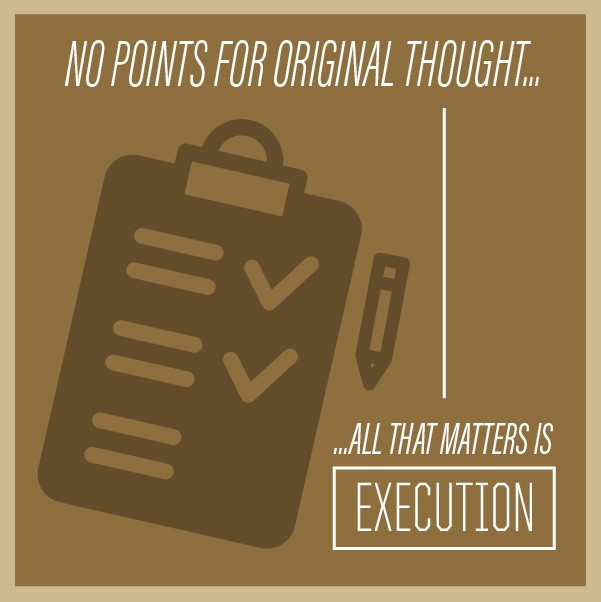Publication
Gartner 2019-2020 Top Insights for the C-Suite: How to Excel at Both Strategy and Execution
Reviewer
Dr. Pete Hammett, Visiting Professor
Summary
In the mid 1990’s, I had the honor of leading the operations and technology teams at American Express in the development and introduction of a remarkably successful credit card. Amex invested nearly 18 months in researching and designing compelling features for the new card. Some of the new features were so distinct in comparison to credit cards already in the market, the technology and operations teams had a real chore enhancing our current systems and procedures to support the new design. But with a great deal of effort, the new card was launched and the response from customers was amazing, generating one of the most successful product offerings in Amex’s history.
However, within six months, a competitor came out with a card that mimicked Amex’s offerings. By the end of the quarter, much of the energy and excitement for Amex’s new offering was gone.
I recall sitting in an debrief meeting at the Amex NYC office when the EVP in charge of our division heard various reports on how the new product was performing against the competition. This led to the question, “How could our competition introduce a product in six months that took us two years to bring to market?” The explanation was obvious: they did not have to put time into R&D. All they had to do was copy our product features.
In that moment, the EVP made a comment that has remained with me to this day: “There are no points for original thought. All that matters is execution.” I was reminded of this saying when I read Gartner’s 2019-2020 Top Insights for the C-Suite. The theme of the report is centered around how to succeed at both strategy and execution. Of particular interest in the report is the graphic showing uncertainty in business conditions across market trends.
A critical issue in execution lies in the fact that very few people can connect their efforts with the organization’s strategy. In fact, only 46% of leaders agree that their efforts are aligned with strategy, and the reason is that leaders do not fully understand how to carry it out in the continually changing and uncertain operating environment. I see this happening regularly — priorities change daily as new and competing demands arise. This occurs in day-to-day operations as important (strategic) efforts give way to urgent (never-ending) fires that surface.
Equally challenging are decisions made with a short-term mindset. I was engaged in a leadership development effort with a multi-national software firm during which its COO relayed a profound observation during an alignment meeting: “We don’t make decisions against our strategy. We make decisions against our annual budget. If what we need to accomplish isn’t in the budget, then it’s not done.”
Here again, the report highlights common problems that impede execution.
Based on insights from over 200 senior executives and midlevel managers, Gartner identifies the importance of consistent and on-going alignment in firms’ strategy. Building a clear awareness, understanding and commitment to the strategy — not only at the beginning, but throughout the initiative — helps ensure efforts remain aligned.
In practice, I have seen great attention given when a new strategy is introduced. Executives often embark on corporate ‘roadshows’ to announce and energize the troops about the new direction. But soon after the fanfare, organizational inertia pulls the company back to business-as-usual. When competing demands for resources surface, little effort is made to maintain focus on important efforts that advance the strategy. Gartner suggests maintaining a strategic focus throughout the initiative will improve mid-execution decisions by upwards of 60%.
What this means for Food and Agricultural Business
The bottom-line, Gartner outlines four areas to improve strategy execution that can be implemented across all organizations, including food and agribusiness firms:
- Strengthen cross-silo awareness, understanding and commitment to the strategy throughout the initiative — not just during strategy roll-out.
- Anticipate and plan for trade-offs and guide the interpretation of new information for frontline managers to better equip them to pivot.
- Adapt performance management systems to recognize and reward results that are aligned with executing against the strategy.
The industry is ever-evolving as customer needs change, disruptions arise, technologies advance and firms attempt to adjust. As these changes persist, effective strategy execution is critical for food and agribusinesses to adapt in order to remain competitive in the market. By implementing Gartner’s suggestions, food and agribusinesses can better plan for the future and strive for a strategic route to success. I greatly encourage taking time to thoroughly review Gartner’s 2019-2020 Top Insights for the C-Suite report as it provides helpful insights for strategy execution across all function within an organization from information technology to finance and R&D to human resources. I know you will find this report as insightful as I have.



